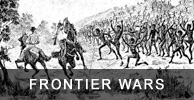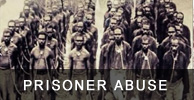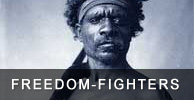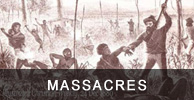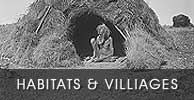Why does the Australian War Memorial ignore the frontier wars?
The battle between Aboriginal people and settlers is at the heart of nationhood but absent from war dead commemorations
Paul Daley theguardian.com 12 September 2013

Australia is spending $32m to upgrade the memorial's first world war galleries, but there are no plans to commemorate the 20,000*** Indigenous Australians who died in the frontier war. Photograph: Lukas Coch/AAP
Australians don't much like Canberra but they do love the Australian War Memorial which stands below Mount Ainslie in a spot once reserved for a casino amid leisure gardens with al-fresco cafes, a theatre and a German-style beer garden.
But just as the first world war changed Australia's fabric, it altered the very shape of its capital.
And so this European indulgence, the casino, gave way to the country's foremost secular shrine - a place to which the new federation, determinedly nation-building while stoically grieving the loss of a generation of men, looked to honour its 62,000 dead and missing.
With the approaching centenary next August of the outbreak of the first world war, Australia is spending $32m to upgrade the memorial's first world war galleries - part of meeting its mandate to help Australians "remember, interpret and understand" the country's war experiences.
It is a broad and generous brief.
This mandate, however, has been narrowly interpreted by successive generations of memorial officials whose Anzac-centric focus continues to stubbornly exclude the fierce battles for sovereignty between Aboriginal Australians and pastoral settlers across the frontier, which are at the dark heart of Australia's nationhood.
As the 100th anniversary of the start of the first world war nears - and for Australia the far more significant and emotive centenary, on 25 April 2015, of the disastrous Gallipoli landings - there is no indication that the war memorial plans to tell the story of this country's frontier war.
According to very conservative estimates, at least 20,000 Indigenous Australians died at the hands of Australian-based military regiments, police forces and settlers' militia from 1788 until the last known "massacre" at Coniston, Northern Territory, in 1928.
Some Aboriginal warriors were killed in heated battles with soldiers and police. Others belonged to communities targeted in reprisal killings - premeditated massacres, the evidence of which was destroyed.
Meanwhile, by some estimates at least 2,000 early soldiers, police and settlers died at the hands of Aboriginal raiders who resisted the pastoral settlement on traditional lands, stole livestock and carried out retaliatory raids, sometimes on the innocent.
The War Memorial Act gives the institution discretion to tell the combat story of military forces of the Crown raised in Australia before and after the establishment of the Commonwealth.
There have been decades of vigorous internal debate - between successive directors, historians, archivists and council members - about whether to reflect frontier war in the galleries of the memorial. But conservatives have consistently won out.
Former Howard government minister for defence Brendan Nelson, who began as director last December, apparently continues the tradition. He recently opened an exhibition on Australia's ongoing involvement in Afghanistan. But he is said to be intransigent on reflecting frontier conflict.
A semantic escape clause for those opposed to acknowledging frontier conflict in the memorial is the absence of a post-1788 formal declaration of war - by the occupiers, at any rate. This, despite the Australian and British archives being filled with references to the frontier conflict as "war".
For example, in 1816 the governor of New South Wales, Lachlan Macquarie - a humanitarian in his approach to the colony's indigenes compared to predecessors and successors - ordered a punitive military expedition south of Sydney, with the instruction to troops: "On any occasion of falling in with the Natives, either in Bodies or Singly, they are to be called on, by your friendly Native Guides, to surrender themselves to you as Prisoners of War. If they refuse to do so, make the least show of resistance, or attempt to run away from you, you will fire upon and compell [sic] them to surrender, breaking and destroying the Spears, Clubs, and Waddies of all those you take prisoner. Such Natives as happen to be killed on such occasions, if grown up men, are to be hanged up on Trees in Conspicuous Situations, to Strike the Survivors with the greater terror."
Aboriginal oral history is rich with accounts of Indigenous warriors, among them Pemulwuy, Jandamarra, Wyndradine, Durelle and Kanabygal (the last two were both killed in Macquarie's operation against the "Hostile Natives"). Again, versions of their stories - and records relating to their deaths - are in the Australian, British and European archives.
Regardless, the specific stories of these first Australian warriors aren't to be found in the Australian War Memorial.
But, paradoxically, the commemorative courtyard in the memorial does allude to this story that the war memorial stubbornly refuses to tell.
Bordered with militarily precise shrubs including the herb of remembrance, rosemary, the outer walls are adorned with a series of elaborately carved gargoyle-style heads representing Australia's fauna - koalas, lizards, emus and, naturally, the ubiquitous kangaroo. And there are two Aboriginal faces in stone, a man and a woman - a salient reminder of how, even as recently as 1941, officialdom viewed Aborigines.
The war memorial's collection includes photographs and accounts of the Aborigines who served (only the "half-caste" were eventually permitted in the first world war). And the memorial collection even holds an 1852 lithograph - Mounted Police and Blacks, by Godfrey Mundy - that depicts frontier violence. But this painting is rarely hung.
You will not find more than passing mention of Australian frontier conflict in the area of the memorial where it might, appropriately, be depicted - in the lower ground galleries of
Soldiers of the Queen: Australia's Colonial Military Heritage. Here it is explained: "From the mid-19th century Australia's military concerns turned noticeably from internal threats - of convict revolt, civil disorder and Aboriginal resistance - to involvements in foreign conflicts."
The anomaly of these - albeit excellent - depictions of Australian units in New Zealand, the Sudan, South Africa and China, is profound. For here, in my country's war memorial, I can see Australian colonial troops in the frontier wars of others: against the Maori and the Boer, against Chinese militants and against the indigenes of Sudan. But I cannot learn of the battles between colonial police, soldiers, settlers and Aboriginal warriors on the Australian pastoral frontier.
Writer, historian and former war memorial deputy director Michael McKernan says: "It should be remembered that the memorial's response from the 1980s onwards has been that the coverage of Aboriginal Australia and, specifically, the impact of white European settlement on Australian Aborigines - including violence on the colonial frontier - is the responsibility of the National Museum of Australia. It seems to me that that is like saying that you've been put in charge of putting forth the story of Australia at war but that that particular part of the story is too confronting or too uncomfortable - too hard, for whatever reason."
Shane Mortimer, an elder of the Ngambri - the traditional owners of the land on which the Australian Capital Territory and thus the war memorial sits - is among many Indigenous leaders who have lobbied Nelson on the war memorial's refusal to depict frontier conflict. He is also, along with numerous other Indigenous leaders, seeking greater specific acknowledgement of Aboriginal service personnel.
"I asked Dr Brendan Nelson following his AWM directorship appointment - 'When will the AWM acknowledge the frontier conflicts and put a memorial to Aboriginal people on Anzac parade?' Dr Nelson was adamant that the AWM does not acknowledge the 'frontier conflicts' as war and won't acknowledge Aboriginal participation in war," Mortimer said.
Asked if Nelson would consider depicting frontier conflict in the memorial, an AWM spokeswoman said the memorial "holds a rich collection of material related to Indigenous servicemen and women from the first world war".
"This includes embarkation information, prisoner of war records, Red Cross files, personal letters, service details, works of art, photographs and medals. We also have a significant project underway - 'The Guide To Indigenous Service Collections at the Memorial' will identify Aboriginal and Torres Strait Islanders who served during the first world war and display records and collection material related to their individual service," she said.
On Nelson's meeting with Mortimer, the spokeswoman said: "Our Indigenous liaison officer, Gary Oakley, was also present at this meeting and he recalls that they did talk about frontier wars and that the director acknowledged the importance of these stories but that they should be told at the National Museum, not the Memorial because of our Act."
She said that while the memorial "does refer to civil disorder in our colonial galleries" the AWM Act means "the story of frontier wars is not for us to tell".
"The story of conflict between Indigenous Australians, militia and police during the 19th century is one that must be told. However, the mission of the Australian War Memorial does not extend beyond the experience of deployed Australian forces overseas in war and in peace. The institution whose mission includes this is the National Museum of Australia."
As Australia prepares for a four-year festival to commemorate the impact of the first world war on the infant federation, some may see it as an inappropriate time to delve into the frontier violence that still reverberates through our sovereignty.
Conversely, it is just as easily argued that, if we are examining how past wars continue to shape us, the time has never been better - especially when Australians are embracing the idea, with bipartisan political support, of constitutionally acknowledging Aborigines as the original possessors of this land.
Yes, we can only know ourselves properly when we have accepted the truth about all of the conflicts - including frontier war - that comprise our history. It is time for our cultural amnesia about the frontier to end.
And where better to start than in the Australian War Memorial? A place where the stories of the Aboriginal warriors like Kanabygal could be told alongside those of the troops who pursued and killed him in 1816. Consistent with Macquarie's order, they hung Kanabygal from a tree. Then they cut off his head and sent it to Edinburgh where it remained for 175 years - an antiquity, a trophy and an anthropological specimen. Today Kanabygal's skull, held together with wire and screws, sits in a cardboard box in an outer industrial suburb of Canberra. It is not far, as the cockatoo flies, from the Australian War Memorial. But it might as well be a continent away.
 Lest We Forget the warriors who fell in 'The Frontier War' conflicts
Lest We Forget the warriors who fell in 'The Frontier War' conflicts
 'The Forgotten War' - slaughter on stolen lands
'The Forgotten War' - slaughter on stolen lands
*** 20,000 may have been the number of First Nations people who gave their lives for 'country' during the undeclared frontier wars, but recent research provides us with enough evidence to say that the numbers of people who died in wars and massacres is in the boundaries hundreds of thousands people.
More related articles on this site
![]() Lest We Forget the Frontier Wars – Anzac Day 25th April 2012
Lest We Forget the Frontier Wars – Anzac Day 25th April 2012
![]() Aboriginal activists remember the Frontier Wars
Aboriginal activists remember the Frontier Wars
![]() War memorial battle over frontier conflict recognition
War memorial battle over frontier conflict recognition
![]() Reconciliation, Nationalism and the History Wars
Reconciliation, Nationalism and the History Wars
![]() Protest to recall Aboriginal dead
Protest to recall Aboriginal dead
![]() Australia's forgotten war - New Book by Henry Reynolds
Australia's forgotten war - New Book by Henry Reynolds

